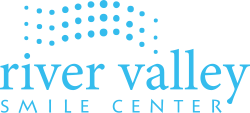
When it comes to dental hygiene, it is never too early to start training your children in proper oral health habits. From the time their first tooth emerges, you have an opportunity to begin developing proper tooth care that they will eventually (hopefully!) take over on their own for a lifetime of healthy teeth!
Below is a guideline for guiding your child in proper dental hygiene from birth through adolescence. Remember, studies say that it takes a minimum of 21 days for a new habit to form. If you’re just getting started in facilitating a solid brushing and flossing routine with your child, be prepared to stick with it for at least this long before it starts feeling like routine. Your diligence will pay off over time!
The First Year of Life
Typically, during the first year of life a baby’s first tooth emerges. At this point (or even earlier if you like), you should start cleaning their teeth and gums. By starting early, your child will get used to the daily routine. In these early months, a wet washcloth wrapped around your finger serves as the best toothbrush. At this point no toothpaste is needed. Simply wiping down the teeth and gums with a clean cloth is sufficient for removing harmful sugars from the surface of the teeth.
Toddler and Pre-School Years
During the toddler years, you can transition to a toddler-sized toothbrush and brush their teeth twice per day. Around age 2, your child is old enough to learn how to spit while brushing. It is at this point that you can introduce toothpaste, adding a small pea-sized amount to the brush when cleaning their teeth. As long as your child is not swallowing the toothpaste, it is fine to begin using a fluoride toothpaste as early as age 3. As well, once your child’s teeth begin to touch you should start to floss in between them. During this toddler stage, you as the parent should be the one to brush and floss your child’s teeth. A good system for brushing is to take turns. You brush their teeth thoroughly, have them spit, then give them a turn with the toothbrush to learn and get used to holding it on their own in preparation for the day that they will take over the habit themselves.
School Years
Once children reach the age of 6-7, you can begin assessing whether they possess the coordination to begin brushing and flossing their teeth on their own. Until this age, they will learn by your example of consistency and proper brushing and flossing on their behalf. As they take over their own brushing and flossing routine, you can also begin introducing a mouth rinse, taking care to ensure they are capable of rinsing and spitting, rather than swallowing the rinse. As they begin to brush and floss on their own, be sure to help them remember when to brush and floss each day and provide accountability in the process.
Adolescence
By this stage of development, if the proper hygiene routines have been instilled in them in earlier years, your child should be ready to maintain this habit fully on their own without parental involvement. Although you should help them see the dentist for hygiene visits twice per year and support them by ensuring they have the proper tools and supplies, the goal at this stage is independence in preparation for a lifetime of oral health.
Other Considerations
Fluoride Treatments/Dental Sealants: Ask our office about fluoride treatments and/or dental sealants for your child if you are concerned about cavities even with a solid dental care regimen. We are glad to discuss options with you that may be best for your child.
Types of Toothpaste: There are a plethora of toothpastes in a variety of flavors on the market. Feel free to choose which ones work best for your family. As long as it is ADA approved, if a particular flavor or brand makes brushing more exciting and appealing, this is the best choice for your child as it will aid in their enjoyment of the process. Helping to establish and maintain a proper brushing routine is a primary goal regardless of the type of toothpaste that is used. Make it fun!
Toothbrush Care: At every stage of their development, be sure to replace your child’s toothbrush every 3-4 months, and sooner if the bristles look worn. Be sure to use a soft to medium bristle to minimize damage to gums. If you want to deep clean toothbrushes in between replacement, soak them in hydrogen peroxide, rinsing thoroughly before returning for use.

